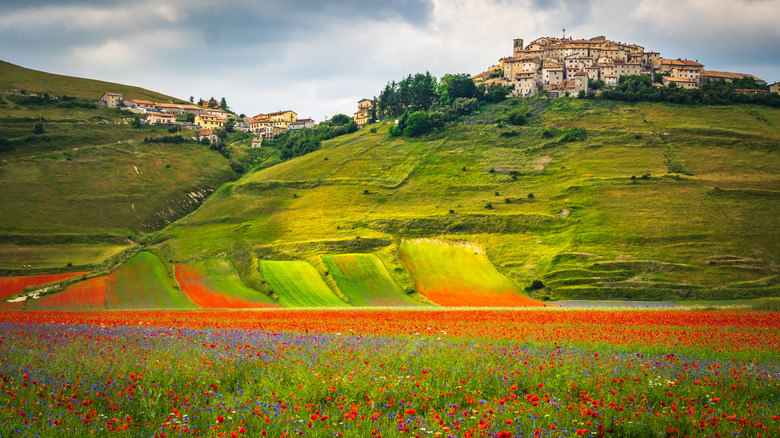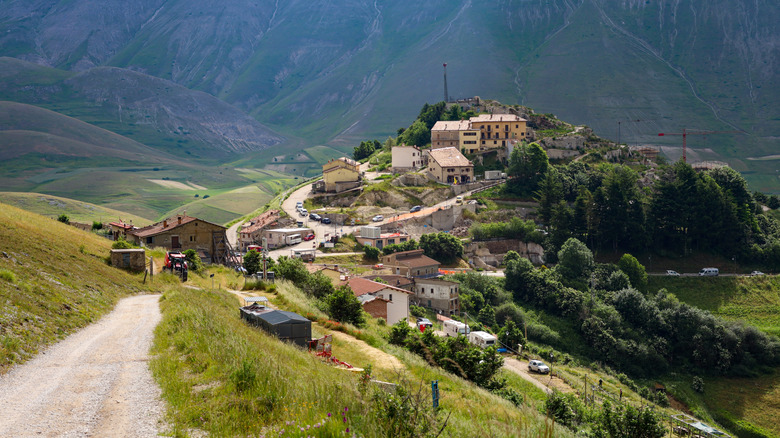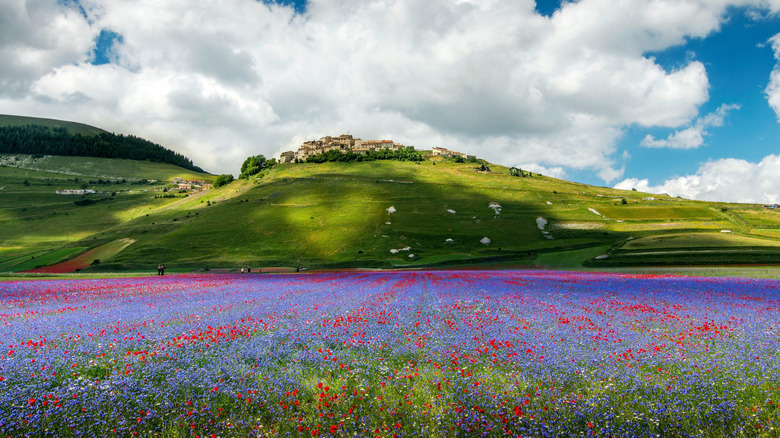Central Italy’s stunning Umbria is a haven of countryside hikes, antique hilltop villages, rustic food, and picturesque lakes like Lake Trasimeno, home to beautiful islands that don’t get enough attention from the average traveler. But this little hilltop hamlet, Castelluccio, perched on Umbria’s eastern edge at an impressive 4763.78 feet above sea level, is even further from the tourist trail, deep within what is often called the “green heart of Italy.” But what makes this little spot so appealing is its spring and summer transformation, when the plains surrounding Castelluccio begin to change from a monotone green to vivid gradients of crimson, purple, orange, and blue in a phenomenon known in Italian as La Fiorita, or “the flowering,” one of Italy’s prettiest displays of wildflowers.
This kaleidoscopic animation happens across a collection of plateaus: Pian Grande, Pian Piccolo, and Pian Perduto, with the Pian Grande forming the main spectacle from Castelluccio. This stunning natural attraction, which is about a 32-minute drive from wonderful Norcia in the Monti Sibillini National Park, is popular year-round with walkers, cyclists, horse riders, and birders, but the best time to visit if you want to see the flowers bloom is between mid-June and mid-July, though there are blooms as early as May.
Castelluccio: flowers, lentils and the Bosco Italia
Castelluccio’s flower-painted grasslands change throughout the seasons, taking on different colors in vibrant waves, depending on whether it is the gentianella, narcissi, violets, poppies, buttercups, orchids, or eugenia currently flowering. Amongst all this, you would be forgiven for missing a comparatively small flower that sprouts up in tones of white and purple: the blossom from Castelluccio’s much-loved local lentils. This local lentil variant is famed for being extremely nutrient-rich and softer than others, owing to the local climate and soil, so they’re easier to cook, often served with cuts of pork or in hearty pasta dishes. Try the lentils for yourself at the excellent Taverna Castelluccio, which has a terrace overlooking the plains and serves Castelluccio’s wonderful lentils with everything from sausages and polenta to soups and salads.
Arguably, the best way to see La Fiorita is by hiking. There are routes of varying difficulty encircling mountains, cutting through flower-embellished hillsides, and boasting beautiful views of the Apennine Mountains. But one of the most accessible is a route directly out of Castelluccio to Poggio di Croce. The route is 5 miles long and is a reasonably taxing hike with some challenging elevation, but the views of the wildflowers sweeping across the plateau soothe even the achiest of muscles.
If you happen to be in Castelluccio when the flowers aren’t blooming, there is another, and somewhat curious natural sight to take in: the Bosco Italia. This Bosco Italia is a plantation of pine trees just below Castelluccio that, when viewed from afar, forms the shape of Italy as seen on a map.



